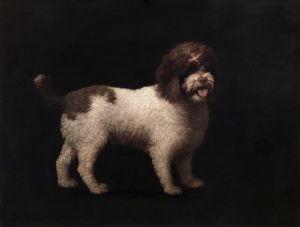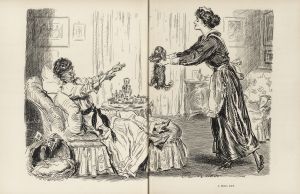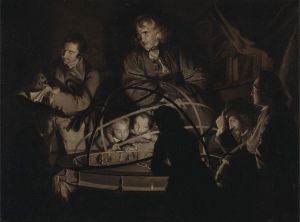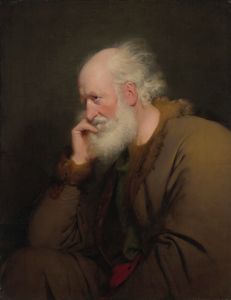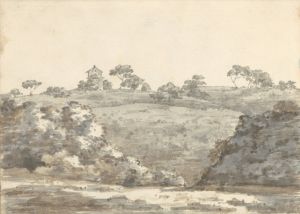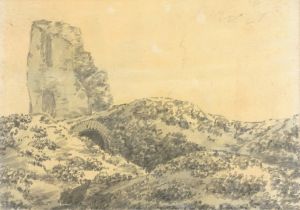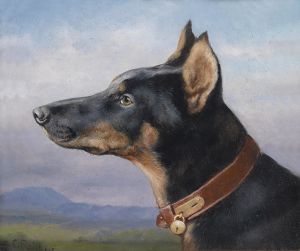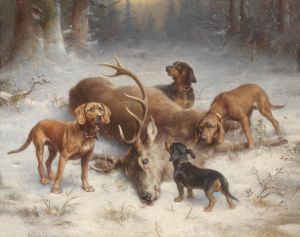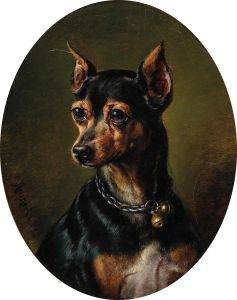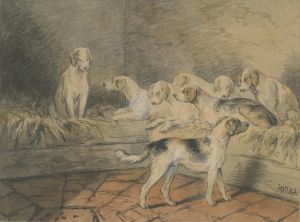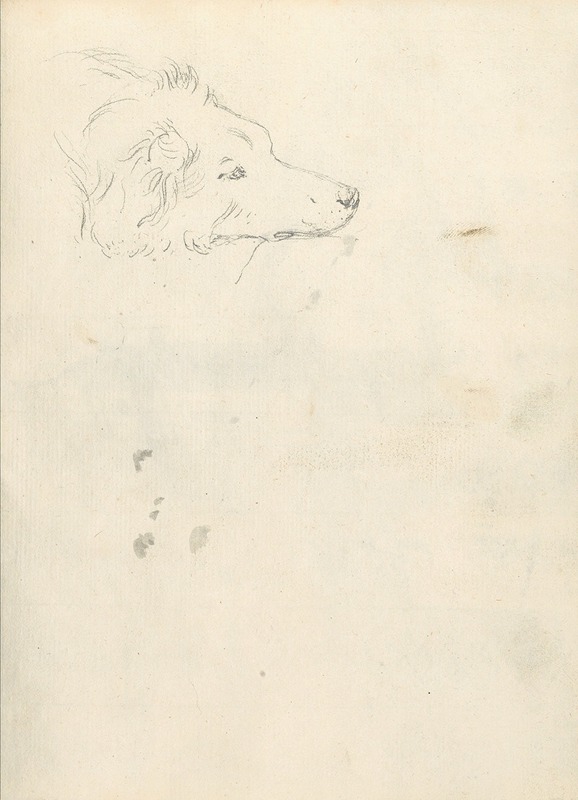
Head of a Dog
A hand-painted replica of Joseph Wright of Derby’s masterpiece Head of a Dog, meticulously crafted by professional artists to capture the true essence of the original. Each piece is created with museum-quality canvas and rare mineral pigments, carefully painted by experienced artists with delicate brushstrokes and rich, layered colors to perfectly recreate the texture of the original artwork. Unlike machine-printed reproductions, this hand-painted version brings the painting to life, infused with the artist’s emotions and skill in every stroke. Whether for personal collection or home decoration, it instantly elevates the artistic atmosphere of any space.
Joseph Wright of Derby, an English painter renowned for his contributions to the art world during the 18th century, is best known for his dramatic use of chiaroscuro and his depictions of the Industrial Revolution. Among his diverse body of work is the painting "Head of a Dog," which, while not as famous as some of his other pieces, still reflects his skill and attention to detail.
"Head of a Dog" is a fine example of Wright's ability to capture the essence and character of his subjects, even when they are animals. The painting showcases a dog's head, rendered with meticulous attention to the texture of the fur and the expression in the animal's eyes. Wright's use of light and shadow in this work is particularly noteworthy, as it highlights the contours of the dog's face and gives the painting a lifelike quality. This technique is consistent with Wright's broader oeuvre, where he often employed chiaroscuro to create depth and drama.
Joseph Wright was born in Derby, England, in 1734 and became one of the most prominent artists of his time. He is often associated with the Enlightenment due to his interest in science and philosophy, which is evident in many of his works. Wright's paintings frequently depict scientific subjects and experiments, capturing the spirit of curiosity and discovery that characterized the era. However, his artistic range was broad, and he also painted portraits, landscapes, and scenes of everyday life.
While "Head of a Dog" may not be as widely discussed as Wright's other works, such as "An Experiment on a Bird in the Air Pump" or "The Orrery," it still demonstrates his versatility as an artist. The painting is a testament to Wright's ability to convey emotion and character through his art, whether he was painting people, animals, or inanimate objects.
Wright's career was marked by a series of successes and challenges. He trained in London under the portrait painter Thomas Hudson and later returned to Derby, where he spent much of his life. Despite the geographical distance from the major art centers of the time, Wright managed to achieve considerable acclaim. His work was exhibited at the Society of Artists and the Royal Academy, and he was highly regarded by his contemporaries.
In addition to his artistic achievements, Wright's personal life was also notable. He was a member of the Lunar Society, a group of prominent intellectuals and industrialists who met regularly to discuss scientific and philosophical ideas. This association further influenced his work, as seen in his interest in light and shadow, which can be interpreted as a metaphor for enlightenment and understanding.
"Head of a Dog" is a reflection of Wright's ability to find beauty and interest in a variety of subjects. The painting's focus on a single animal head allows viewers to appreciate the artist's skill in rendering detail and texture. While it may not carry the same historical significance as some of his other works, it remains an example of Wright's dedication to his craft and his ability to capture the world around him with precision and sensitivity.





